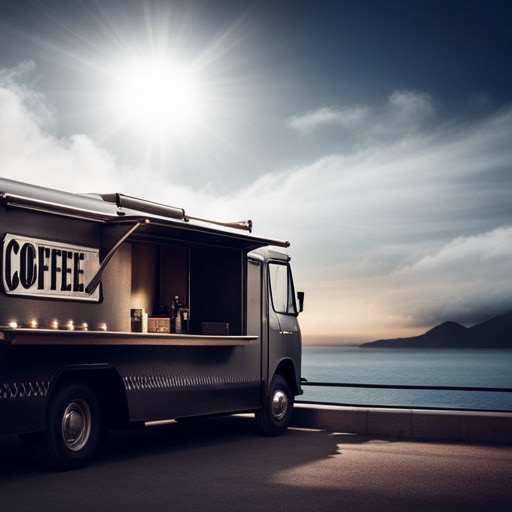Starting a mobile coffee truck business can be both a rewarding and demanding venture. It’s a unique path in the food and beverage industry that marries the craft of coffee brewing with the dynamism of a food truck business model. Rewarding, because it allows you to interact directly with your customers, serve up great coffee, and enjoy the freedom that comes with a mobile enterprise. However, like any business, it is not without its challenges.
In the span of running this business, there will be numerous hurdles that have tested both a person’s resilience and adaptability. From logistical issues like securing the right permits and finding suitable locations, to operational challenges such as maintaining consistency in the quality of coffee served, ensuring truck maintenance, and managing inventory, each day brought with it new learnings.
Navigating through financial planning, marketing, and customer relationship management, while keeping an eye on the bottom line, has required a mix of business acumen, creativity, and a deep understanding of the product – coffee.
Yet, every challenge faced was also an opportunity for growth, and every setback, a chance to innovate. Whether you are looking to start your own coffee truck business or you’re simply intrigued by what the journey entails, here are some valuable insights:
Start with a Solid Business Plan: Before diving into any business venture, it’s important to have a comprehensive business plan. This should include everything from budgeting and cost analysis to potential locations, target demographics, and marketing strategies. A well-developed plan will guide you through the initial setup and help you navigate challenges down the road.
Know Your Coffee: As the business owner, you should be knowledgeable about what you are selling. Understand the different types of coffee beans, brewing methods, and current trends in the coffee industry. This knowledge will help you to develop a competitive product and provide a high level of service to your customers.
Location, Location, Location: Your business is mobile, which means you have the unique opportunity to move to where your customers are. Scout out popular areas in your city during different times of the day and week. Consider pairing up with local events, festivals, or markets that will draw a crowd.
Get Necessary Permits: Every city has different laws regarding food and beverage vending. Ensure you have the correct licenses and permits to operate in your desired locations. This can be time-consuming and sometimes costly, so make sure to factor this into your business plan.
Invest in a Quality Vehicle and Equipment: A reliable coffee truck is the backbone of your business. The same goes for your coffee-making equipment. While it might be tempting to save money in this area, frequent breakdowns can harm your reputation and cost you customers.
Marketing and Branding: Make your coffee truck unique and memorable. This could be anything from a catchy name and logo to a distinctive color scheme or design for your truck. Utilize social media and local advertising to get the word out about your business.
Offer Consistent Quality: The best marketing strategy is a satisfied customer. Make sure every cup of coffee you sell is of high quality. It’s better to have a small menu of fantastic drinks than a wide variety of mediocre ones.
Prepare for the Unexpected: Whether it’s a global pandemic, a truck breakdown, or inclement weather, unexpected events can drastically impact your business. Plan for these contingencies in your business plan, and always have a backup plan.
Create a Solid Financial Plan: It’s important to keep track of your income, expenses, and any potential debts. Plan your budget carefully, and make sure to include funds for unforeseen emergencies.
Never Stop Learning: The coffee industry is always evolving. New brewing methods, flavors, and products are constantly emerging. Keep an eye on industry trends and be willing to adapt your business as necessary.
Success doesn’t happen overnight. Running a coffee truck business requires hard work, patience, and resilience. But with careful planning and a passion for coffee, it can be a profitable and enjoyable endeavor.
Please note that if you purchase from clicking on the link, some will result in my getting a tiny bit of that sale to help keep this site going.


